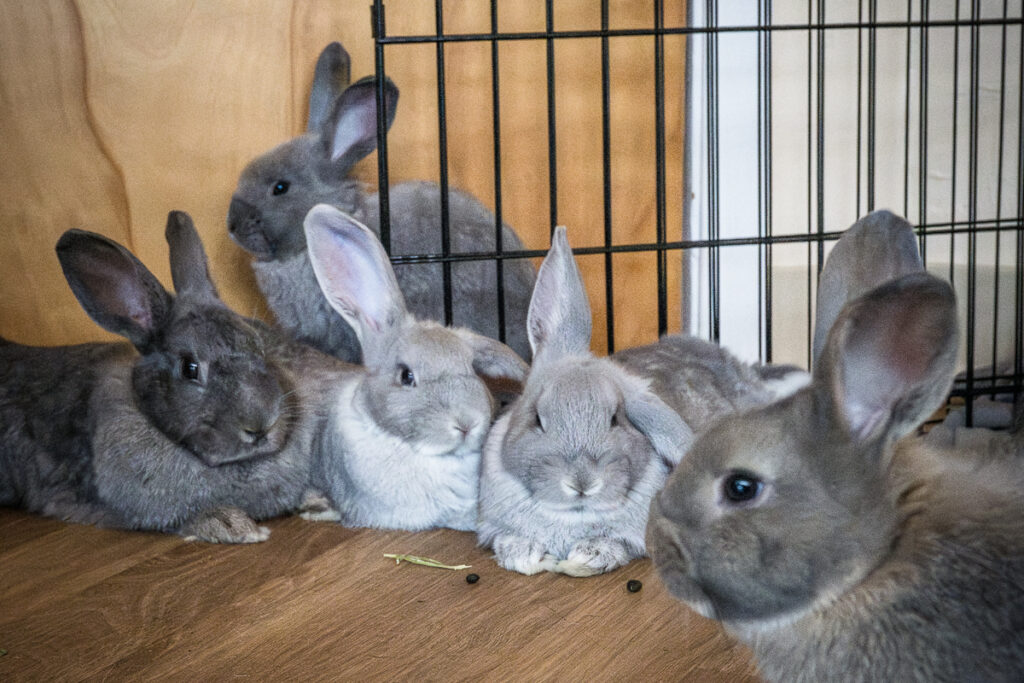Choosing not to breed rabbits is a responsible and compassionate decision for many important reasons. Here are five startling facts about rabbit overpopulation to help convince you that breeding rabbits is a problem.
- Spaying/Neutering Benefits: Spaying and neutering prevents unwanted litters and offer health and behavioral benefits, including reduced cancer risks and aggression. Female rabbits have an over 40% risk of reproductive cancers by the age of three if left unspayed.1 2 3 4
- Overpopulation: Rabbit overpopulation is a significant issue, with many rabbits ending up in shelters or abandoned. Most rabbit rescues and shelters sadly must operate at or beyond capacity, often with waiting lists for surrenders. This indicates a continuous and overwhelming influx of rabbits in need of homes. By not breeding, you help reduce the pressure on already overcrowded rescue organizations and shelters.
- Health Risks: Breeding rabbits comes with health risks to both the mother and her offspring. Pregnancy and childbirth can be particularly stressful and dangerous for the mother rabbit, leading to complications or even death.
- Commitment: Raising a litter of kits (baby rabbits) requires a significant commitment of time, resources, and emotional investment. Each bunny needs proper socialization, medical care, and a suitable home, which can be a daunting task.
- Finding Homes: There’s no guarantee that you’ll find responsible and loving homes for all the offspring. This can lead to rabbits being sold or given away to less-than-ideal situations where they may not receive the care and love they deserve. In addition, by bringing more bunnies into the world needing homes, you’re making it less likely that a rescue rabbit will find a home.
It’s essential to focus on providing the best care for the rabbits already in our lives and supporting rescue organizations and shelters by adopting instead of breeding. For those looking to expand their rabbit family, adopting from a shelter or rescue group is a compassionate choice, giving a home to rabbits in need.
- Prospective survey of neoplastic and non-neoplastic uterine disorders in 116 domestic rabbits (Oryctolagus cuniculus). Science Direct. https://www.sciencedirect.com/science/article/pii/S1557506322000015 ↩︎
- Comparative pathology of endometrial carcinoma. https://pubmed.ncbi.nlm.nih.gov/6388139/ ↩︎
- FAMILIAL MAMMARY TUMORS IN THE RABBIT. https://www.ncbi.nlm.nih.gov/pmc/articles/PMC2133790/ ↩︎
- Tumors and tumor-like lesions in the mammary gland of 24 pet rabbits: a histomorphological and immunohistochemical characterization. https://pubmed.ncbi.nlm.nih.gov/23892377/ ↩︎

